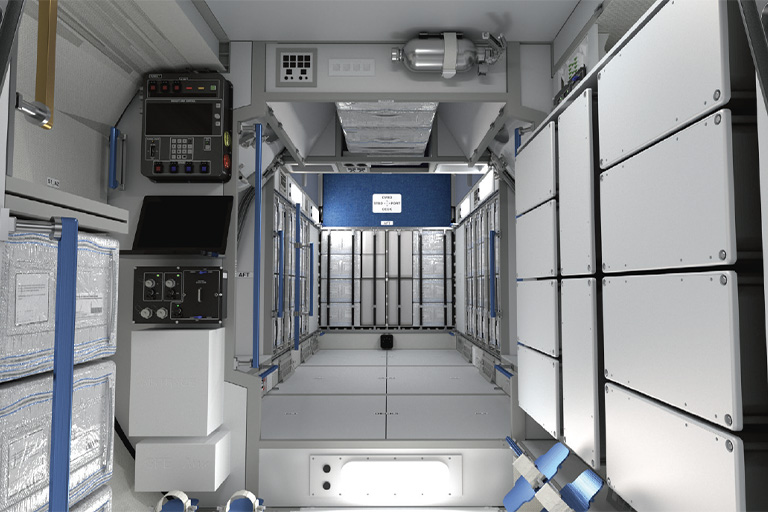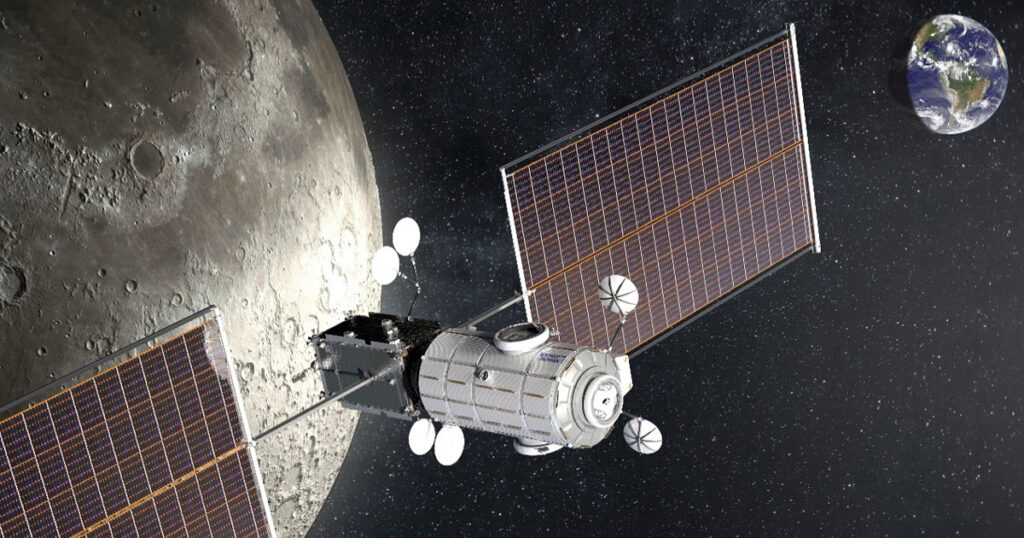By Dr. Debasis Basak
Lunar Habitation
Northrop Grumman Corporation offers a breadth of opportunities for a passionate engineer like me, and the most exciting I’ve been fortunate to be a part of is the Habitation and Logistics Outpost or HALO. HALO is a part of NASA’s Artemis program and the essential element of its Lunar Gateway and will be the living quarters for the astronaut crew as they orbit the Moon. In the near-term, HALO will serve as a staging point for sustained lunar surface exploration, and in the long term will lay the foundation for deep space voyages to Mars and beyond. HALO requires meticulous planning in addition to cutting-edge science and engineering. HALO must be able to provide crews with their basic needs, but designing and building HALO is anything but basic. For example, the air in the module must have the necessary ratio of oxygen, nitrogen, and other gases, in addition to filtering out contaminants to be suitable for life. Also, the humidity, temperature, and pressure must be at the right level; toxicity, flammability, and bacterial growth are concerns that need to be addressed. Our team is also tasked with providing accommodations for storing food, tools, and experiments, and room to exercise and sleep, so the crew has a comfortable and healthy living experience while they are in HALO.

Spacecraft Functions
HALO will be three meters wide, with three docking ports and will support up to four crew members for up to 30 days. The docking ports will host visiting vehicles from earth, like the Orion crew module, cargo re-supply vehicles, and lunar landers that will transport astronauts to the lunar surface.
HALO will perform several functions critical to the Artemis mission:
- Monitor and channel high-power between the Power & Propulsion Element (PPE) and visiting vehicles to the Lunar Gateway
- Provide high-speed ethernet communication throughout the module
- Support communications between the lunar surface and earth stations
- Collect and radiate heat from the module to maintain a stable temperature
- Control the many overall automated functions using onboard avionics
Manufacturing & Integration
It is an exciting and demanding time for the HALO engineering team as we undertake an interdisciplinary effort to maintain its schedule. The primary structure of the module is currently undergoing fabrication, welding, and testing, which is a unique opportunity for me to experience first-hand and work with hardware that will soon orbit the Moon. The next step in HALO’s construction is significant processing, integration, testing, and validation to ensure the module is flight ready.
Tennessee Days
In the early 1990s when I was a graduate student at the University of Tennessee at Knoxville, I learned about the advancements in materials science. My major professor, who was an expert in the field and authored five textbooks, inculcated in me a deep-rooted understanding of the subject and guided innovative research in materials science. The long hours in the lab, the intriguing experiments, the interesting discussions, and the occasional constructive arguments, all paved the way toward making me ready for the professional world where I could leverage my background in materials science. After many years of sharpening my professional skills, I took up my current position as the Materials & Processes Engineering Group Manager at Northrop Grumman, and also a materials engineer supporting HALO. My career journey has been long but rewarding.
The Future
When HALO is launched, it will mark a new era of space exploration. The module’s continued multi-year support of Artemis will provide inspiration and opportunity for many current engineering students, including those at UTK, to become future contributors to the mission.
